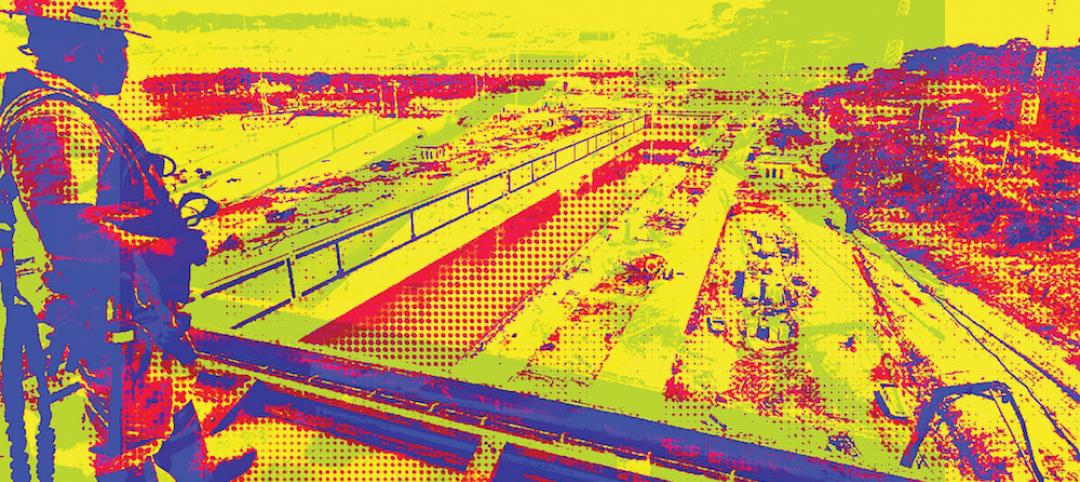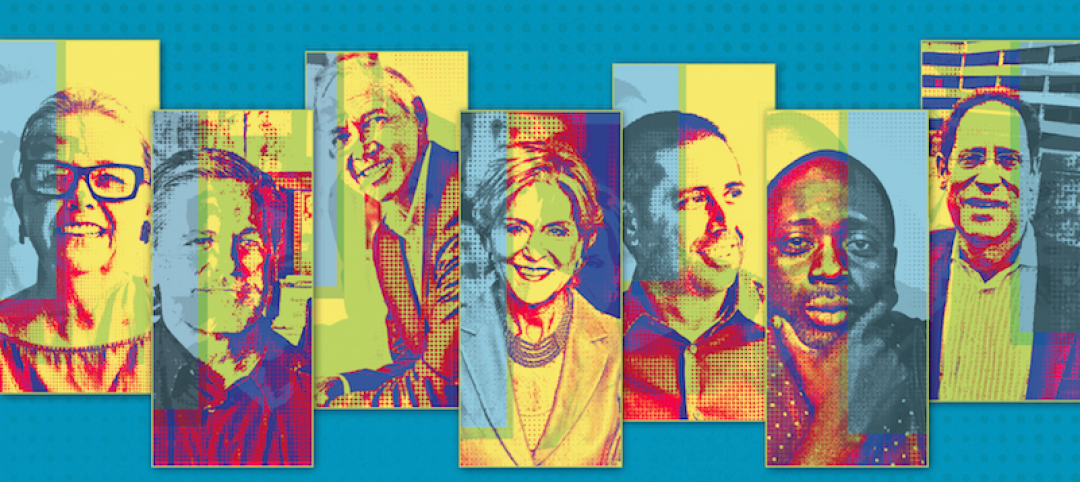Last January, the U.S. Department of Housing and Urban Development awarded a total of $1 billion in National Disaster Resilience grants to 13 states and cities. In making the announcement, HUD made it clear that its judging criteria followed that of Rebuild by Design, a competition that the Rockefeller Foundation initiated in the aftermath of Hurricane Sandy.
The 102-year-old Rockefeller Foundation has long been at the forefront of the resilience movement, helping municipalities and businesses find ways to combat and respond to manmade and natural disasters.
Over the last decade, the Foundation has invested more than $500 million to help communities strengthen their resilience. It has also leveraged $9 billion in resilience investments from governments, private-sector partners, and other actors. The mayors of two dozen U.S. cities (including Berkeley, Calif.; Boulder, Colo.; New Orleans; Pittsburgh; and Tulsa, Okla.) have committed 10% of their cities’ budgets—the equivalent of $5.2 billion—to resilience-building activities.
Rebuild by Design has provided resilience training for 167 communities affected by Hurricane Sandy. Sixty federal agencies have used its training program.
As of April 30, the Foundation’s “100 Resilient Cities” network was fully subscribed; more than 1,100 municipalities applied. “We have 100 test beds proving the resilience model every day,” says the Foundation’s President, Judith Rodin, PhD.
BD+C MOVERS AND SHAPERS
The People, Institutions, and Movements that are influencing design and construction in the U.S. and around the world.
Dan Gilbert – Detroit's Catalytic Converter
Judith Rodin – Crusader for Resilience
Bruce Katz – Urban Evangelist
Millennials – The Disruptors
Alloy LLC – Vertical Integrator
Jerry Yudelson – Green Giant
The PANAMAX Effect – The New Panama Canal
Theaster Gates – Real Estate Artist
Since assuming the position in 2005, Rodin, the former President of the University of Pennsylvania and Provost of Yale University, has seen resilience emerge from being an afterthought in the minds of most civic leaders, to a concern that they can no longer ignore.
“I can’t go to a meeting of mayors and city leaders without being asked how they can join 100 Resilient Cities or get access to those frameworks,” she says.
Rodin sees the AEC community as a “critical partner” in encouraging resilience. The Foundation worked with Arup’s International Development Team to create the engineering giant’s City Resilience Index, which will enable cities to assess their resilience using hundreds of indicators that can be plugged into their own datasets. “Arup has been an amazing thought leader on this,” says Rodin. “We are seeing other [AEC] firms coming to the table, because it’s what their clients are asking for.”
Rodin defines resilience as the ability “to survive, adapt, and grow in the face of stresses and shocks.” The Foundation urges cities to move away from crisis management toward a strategy that anticipates potentially disastrous events.
Corporate types perk up when Rodin mentions how resilience can “give businesses the upper hand” in what she calls “a hugely untapped market.” (One of her recent books is entitled The Resilience Dividend.)
At the BSR Conference in San Francisco last November, Rodin described the five characteristics of resilience: awareness of vulnerability, redundancy, integration, self-regulation, and nimbleness. “You need to prepare to fail safely, not catastrophically,” she told BSR2015 conferees.
She also identified three ways that businesses—presumably including AEC firms—could achieve a resilience dividend: 1) by embedding resilience into their cultures, 2) by creating products and services specifically addressed to resilience, and 3) by positioning themselves as resilience partners with their communities.
RESILIENCE AS A MEANS TO 'TIP' SYSTEMS
Rodin, 71, and the Rockefeller Foundation aren’t just interested in rebuilding communities laid low by disasters: they want to “tip systems.” She sees resilience as much about safeguarding social and economic infrastructures as it is about protecting physical and natural assets.
Rodin test-drove that philosophy during her 11 years as President of Penn, her alma mater, where she worked assiduously with local businesses, law enforcement, and civic leaders in Philadelphia to help make what had been a disadvantaged and crime-ridden neighborhood safer and more economically viable.
Rodin stepped into the resilience breach in 2005 when, at the invitation of Walter Isaacson—the President/CEO of the Aspen Institute and Vice-chair of the Louisiana Recovery Authority—the Foundation funded and helped lead what became the post-Katrina Greater New Orleans recovery plan.
Working with New Orleans over the next decade gave Rodin insight into the power of resilience as a platform “to return and grow.” It wasn’t just about recovering from the flooding; it was also about rectifying years of social inequity.
“We’re definitely seeing the power of resilience as a force for unification in New Orleans,” says Rodin. “Mayor Mitch Landrieu has used resilience as a rallying cry for his city’s comeback.” More than 100 community leaders and stakeholders were consulted by the city to develop its resilience strategy, which launched last August.
Rodin believes resilience gives the Foundation a platform that sidesteps the political minefields of climate change and allows interested parties to “talk about what cities and communities are all experiencing: more disruptions than ever before.”
She says she expects the next global crisis to be about water—not just the availability of supply, but also its quality. By 2030, global water demand is expected to exceed current supply by 40%, according to U.N. estimates.
Rodin warns, Cassandra-like, that the biggest threat to human health and economic progress will come from the further degradation of our natural systems—unless, that is, “we as economic leaders think about revaluing ecosystems and stop viewing them as free goods.”
Related Stories
Movers+Shapers | Jun 17, 2016
REAL ESTATE ARTIST: Theaster Gates works to revitalize African-American neighborhoods
The award-winning Chicago artist renovates properties into studios, libraries, and spaces that commemorate art and black culture.
Movers+Shapers | Jun 16, 2016
THE PANAMAX EFFECT: Panama Canal expansion could trigger an East Coast construction boom
Cities lining the East Coast and Gulf Coast, from New York City to New Orleans, are spending big bucks to accommodate the larger vessels that will now be able to cross a wider and deeper Panama Canal.
Movers+Shapers | Jun 15, 2016
GREEN GIANT: Jerry Yudelson is revamping the green building movement
The author and former president of the Green Building Initiative is critical of current green building rating systems, including the LEED rating program.
Movers+Shapers | Jun 14, 2016
VERTICAL INTEGRATOR: How Brooklyn’s Alloy LLC evolved from an architecture firm into a full-fledged development company
Led by an ambitious President and a CEO with deep pockets, Alloy LLC's six entities control the entire development process: real estate development, design, construction, brokerage, property management, and community development.
Movers+Shapers | Jun 13, 2016
THE DISRUPTORS: The Millennial generation is imposing its will on design
AEC firms, particularly those that design hotels and offices, gain a competitive edge by knowing how to appeal to the largest share of the American workforce.
Movers+Shapers | Jun 10, 2016
URBAN EVANGELIST: Bruce Katz sees America humming again, city by city
Katz, best known as Co-director of the Brookings Institution's Metropolitan Policy program, believes that cities are dynamic networks of like-minded public and private interests that have the potential to generate economic growth.
Movers+Shapers | Jun 9, 2016
8 of the AEC industry's biggest Movers+Shapers
BD+C’s new Movers+Shapers program honors AEC/O industry stalwarts.
Movers+Shapers | Jun 8, 2016
DETROIT'S CATALYTIC CONVERTER: Dan Gilbert’s Bedrock Real Estate Services is helping the Motor City get its mojo back
Gilbert has invested $2.2 billion in Detroit, buying up left-for-dead properties and redeveloping them to lure businesses, investors, and residents back to this beleaguered city.
Movers+Shapers | Feb 8, 2016
Call for entries: BD+C’s 2016 AEC Movers+Shapers report
BD+C’s new Movers+Shapers program will honor AEC/O industry stalwarts. Honorees will be profiled in the June 2016 issue.
















